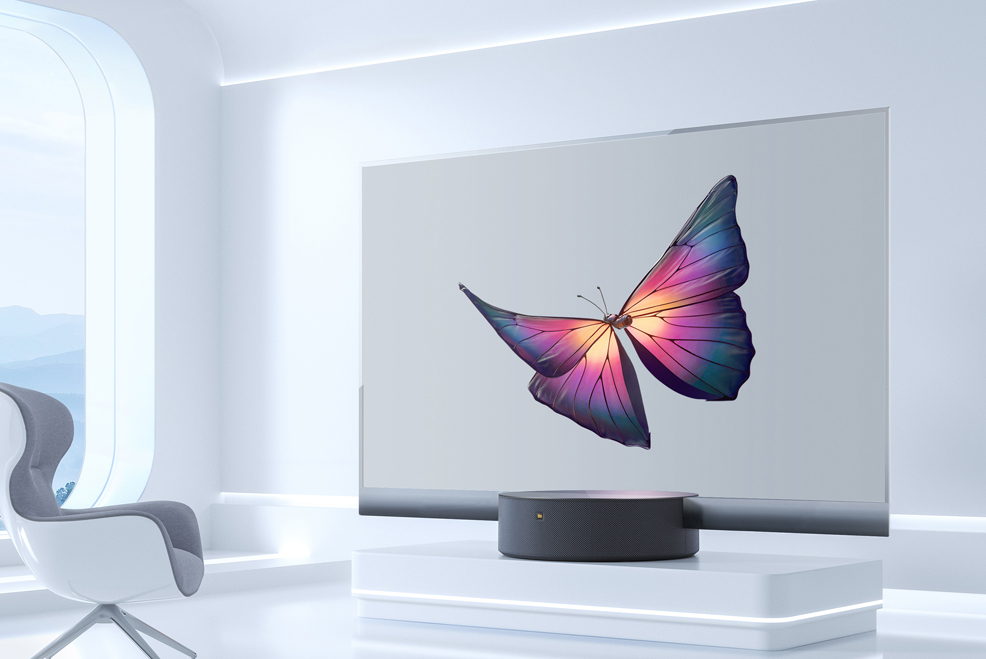- Luật
- Hỏi đáp
- Văn bản pháp luật
- Luật Giao Thông Đường Bộ
- Luật Hôn Nhân gia đình
- Luật Hành Chính,khiếu nại tố cáo
- Luật xây dựng
- Luật đất đai,bất động sản
- Luật lao động
- Luật kinh doanh đầu tư
- Luật thương mại
- Luật thuế
- Luật thi hành án
- Luật tố tụng dân sự
- Luật dân sự
- Luật thừa kế
- Luật hình sự
- Văn bản toà án Nghị quyết,án lệ
- Luật chứng khoán
- Video
- NGHIÊN CỨU PHÁP LUẬT
- ĐẦU TƯ CHỨNG KHOÁN
- BIẾN ĐỔI KHÍ HẬU
- Bình luận khoa học hình sự
- Dịch vụ pháp lý
- Tin tức và sự kiện
- Thư giãn

TIN TỨC
fanpage
Thống kê truy cập
- Online: 223
- Hôm nay: 198
- Tháng: 1621
- Tổng truy cập: 5245625
Worlds first mass-produced transparent TV
Chinese electronics company Xiaomi has revealed a see-through OLED TV with transparent components, reminiscent of displays previously seen only in science fiction films.

The product seen here – Mi TV LUX OLED Transparent Edition – is being launched as part of Xiaomi's 10th anniversary. It features an edge-to-edge, transparent, self-luminous display, transmitting crystal clear images that appear to be suspended in the air, described by Xiaomi as "merging the virtual and the real to bring an unprecedented visual experience."
The 55" screen is just 5.7mm (0.2") thick and uses transparent OLED technology (TOLED). While regular OLEDs use a transparent anode layer that faces a user and a cathode layer reflecting light back, TOLED combines both a transparent anode and cathode, enabling a see-through device. Each diode emits its own light and the need for backlighting is eliminated. When turned off, the TV looks like a mere glass display.
The Mi TV LUX OLED Transparent Edition has a 120Hz refresh rate, 150000:1 contrast ratio, and 1.07 billion colour combinations with an extra-wide spectrum beyond what the human eye can perceive. Also included is Motion Estimation, Motion Compensation (MEMC), a technology that inserts "artificial" frames between original frames, allowing extremely high frames per second for the smoothest possible content and scene transitions.

Artificial intelligence is now widely used in modern TV screens and this product is no exception, with an "AI Master Smart Engine", along with a MediaTek 9650 custom-made TV chip, with over 20 algorithms to intelligently refine graphic resolution. Audio can be optimised too, so the AI will detect what type of content is being played and choose the best audio mode – from a list spanning movies, music, newsfeed, sports, and others. This takes audio performance a notch higher with Dolby Atmos support.
From the information provided by Xiaomi, it is unclear how objects like the fish and butterfly seen here can be "isolated" from the background, and how transparency could affect or improve regular TV content. Whatever the case, the effect is clearly something different and futuristic, and the company seems confident that it provides a sublime and immersive viewing experience.
"The TV is perfect not only for homes, but also for galleries, museums, shopping malls, and theatres," says Xiaomi in a press statement. However, sales are limited to China – at least initially – and its price tag of RMB 49,999 (US$7,200) makes this a high-end, luxury model for now.
By FutureTimeLine
Các bài viết khác
- Từ sự kiện Tổng biên tập báo TIME Greta Thunberg là Nhân vật của năm 2019 đến báo cáo Biến đổi khí hậu Phúc trình của IPCC báo động đỏ cho nhân loại 82021 (15.01.2020)
- Greenland ice sheet melting has passed point of no return (26.08.2020)
- ADB: Kiều hối về Việt Nam sẽ giảm hơn 18% do Covid-19 (13.08.2020)
- Cẩn trọng trái phiếu doanh nghiệp lãi cao (13.08.2020)
- Chiến tranh Lạnh Mỹ-Trung Quốc là không thể tránh khỏi? (13.08.2020)


















































 Yahoo:
Yahoo: 